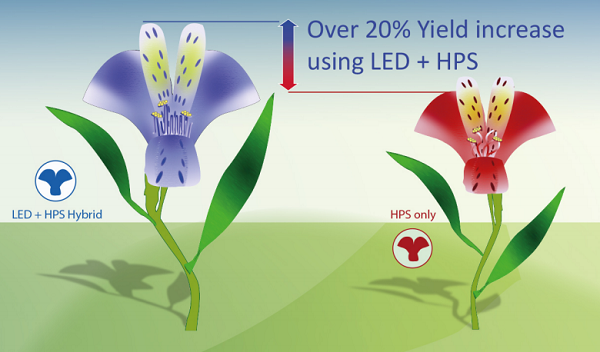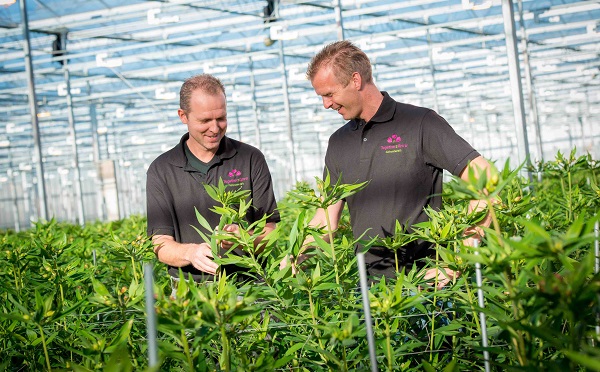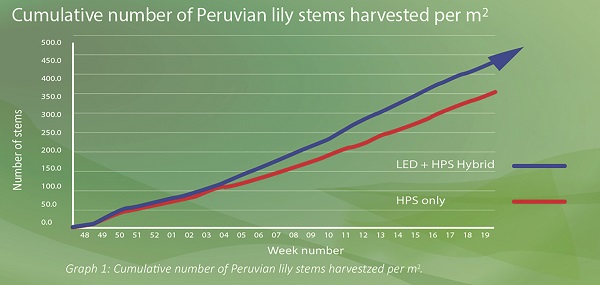Plessey announces a partnership with leading Dutch alstroemeria grower Together2Grow, following a successful trial of its LED grow lights combined with existing high-pressure sodium (HPS) lighting in a hybrid installation.
The four-month trial, managed by Maarten Klein, Plessey’s Head Agronomist, has been running since the end of November 2016 at Together2Grow, to assess the benefits of adding LED to existing HPS lighting compared to just using HPS lamps. The alstroemeria variety tested was Virginia and the existing HPS light intensity of 70 micromoles/s/m² was supplemented with an extra 60 micromoles/s/m² of Plessey LEDs to achieve an average of 130 micromoles/s/m².
 |
|
(Image: Plessey) |
By the end of the trial, a yield increase over 20%was achieved for the hybrid LED/HPS installation compared to the control area with HPS lighting alone. Under the LED/HPS lights, the average weight per stem also increased by 2 grams.
As a result of this successful trial, Bernard Zuidgeest, co-owner of Together2Grow, has decided to team up with Plessey to conduct further trials on other alstroemeria varieties with a view to rolling out LED across the business.
Adding Plessey LED light fixtures to existing HPS lighting systems in a hybrid installation allows growers to give greater light intensity to their crop, for longer periods, with little extra heat to manage in the greenhouse. The plants continue to get radiant heat from the HPS lights but also gain the advantage of light wavelengths unique to the LEDs being used, including far‑red, hyper‑red and blue spectrum light. Plessey’s LED fixtures are at least 40% more efficient in energy consumption than HPS fixtures.
 |
|
Fedor Van Veen and Bernard Zuidgeest, owners of Together2Grow (Image: Plessey) |
Jonathan Barton, Plessey’s Director for Grow Lights, commented, “We are very excited about the results of the LED/HPS hybrid installation achieved at Together2Grow. In addition to the successful results achieved from a similar trial at Gebr Koot tomatoes, this provides evidence of the opportunity for flower growers, as well as vegetable growers, to add our LED lights to their existing HPS lighting to boost yields.”
Bernard Zuidgeest observes: “I am very pleased with the results so far. The crop under LED was looking a lot fuller and healthier and the quality of the flowers was better. By adding no extra radiation heat, but more light, the plants still remained the right plant temperature. We will now trial more varieties with Plessey and plan to convert our greenhouses to hybrid lighting.”
The reaction time from alstroemeria to more light from the LEDs is about 7-8 weeks. The trial started in week 48 of 2016 and by week 2 of 2017 an increase in yield under the LED/HPS hybrid installation was seen week on week.
 |
|
(Image: Plessey) |





 CN
TW
EN
CN
TW
EN







